This past Spring, we asked members of the College of Natural Sciences community to provide us with images that celebrated the extraordinary beauty of science and the scientific process.
Science has always been partly a visual pursuit, as researchers visually communicate their discoveries and explore the topics they hold near and dear. Haeckel created beautiful color illustrations of organisms, Darwin drew evolutionary trees, and da Vinci sketched anatomy, just to name a few.
Now more than ever, science visualizations are part of the discovery process itself, as researchers use 3-D models and data visualizations to uncover patterns in data and reveal the inner workings of life and the universe.
Below, we feature 10 of the most stunning submissions from our faculty, staff and students.
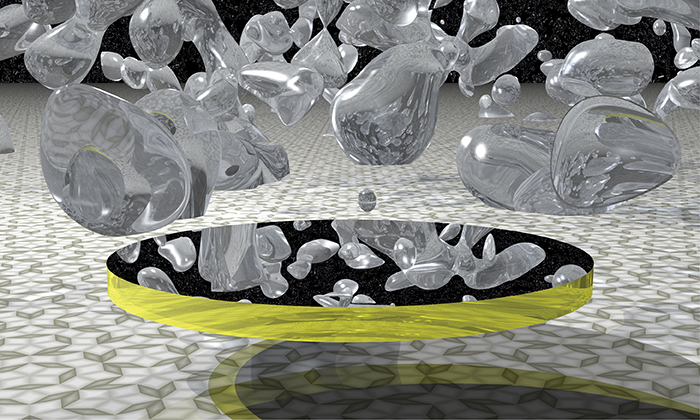
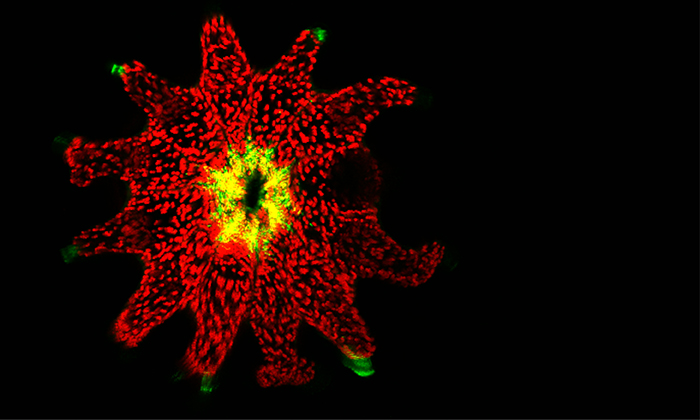
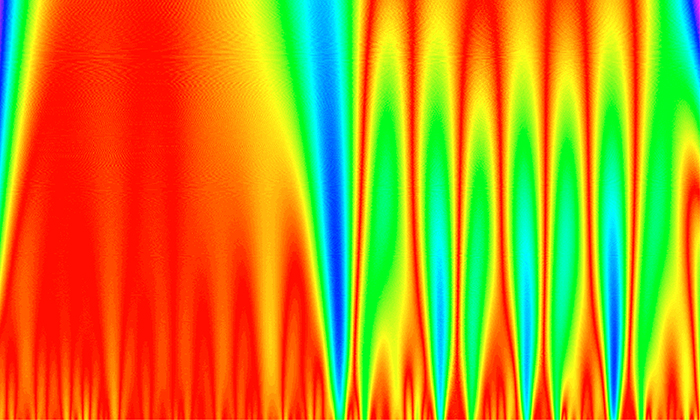
Continuous wavelet transform of the heart rate of exercising subject, showing its multifractal structure. Credit: Dr. Kathy Davis
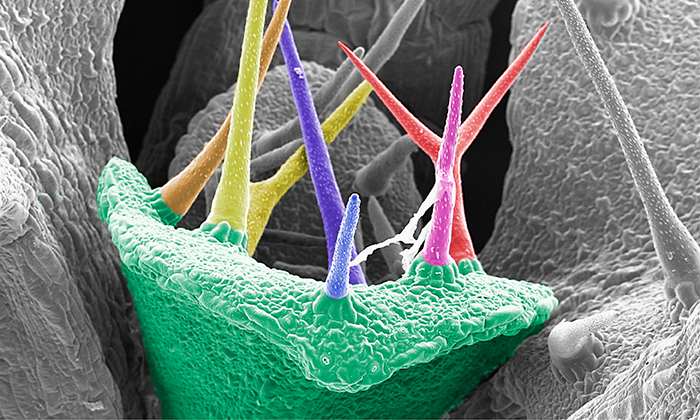
Plant epidermal cells taken with a scanning electron microscope (color added during photo processing). The cells are from the Freshman Research Initiative stream Epidermal Cell Fates and Pathways, and were generated by a former undergraduate student, Tyler Smith, and Dr. Tony Gonzalez. Credit: Tony Gonzalez
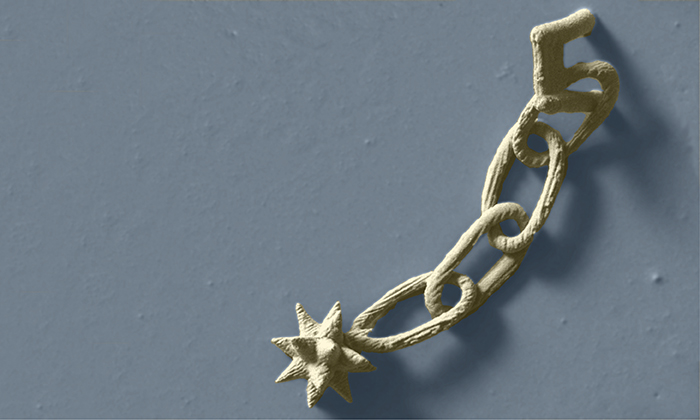
A microscopic 3-D object fabricated from the protein albumin. The star portion of the structure is 15 µm from tip to tip, which is just a touch larger than a human red blood cell. The ability to fabricate structures of this complexity from natural materials is useful for studying quorum sensing and drug resistance in bacteria populations and has potential applications in cancer research, and tissue engineering. Credit: Eric Spivey
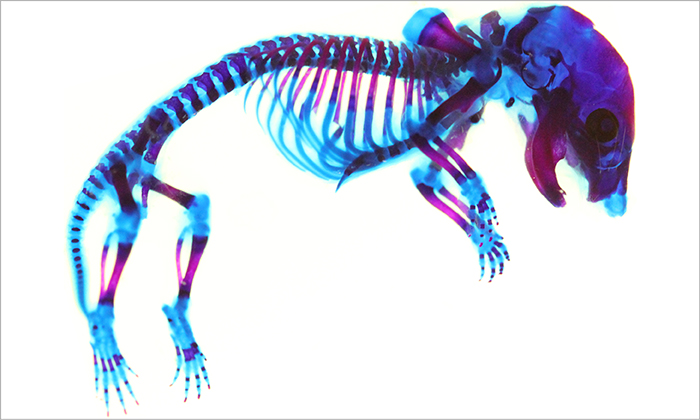
A mouse embryonic skeleton, with bone stained Alizarin Red and cartilage stained Alcian Blue. Credit: Jacqueline Norrie, graduate student
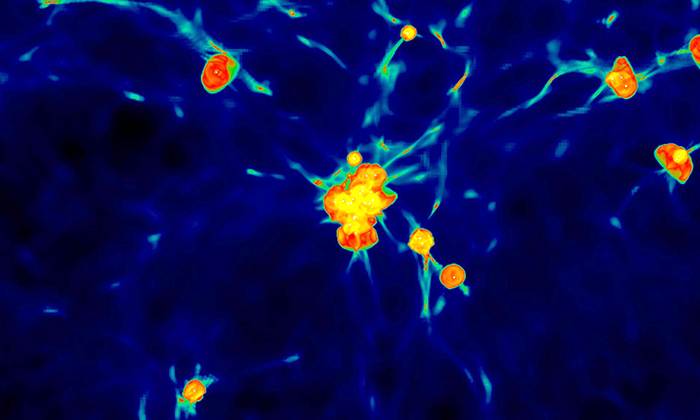
The state of the Universe roughly 200 million years after the Big Bang (13.6 billion years ago), a relatively short cosmic timescale. The orange/red bubbles are regions of hot gas that the first stars created when they ignited. The green streaks are cold cosmic gas that has begun to collapse into dark matter but has not yet formed stars. The structure in the center is destined to become one of the first galaxies with the next hundred million years or so. Credit: Chalence Safranek-Shrader, graduate student
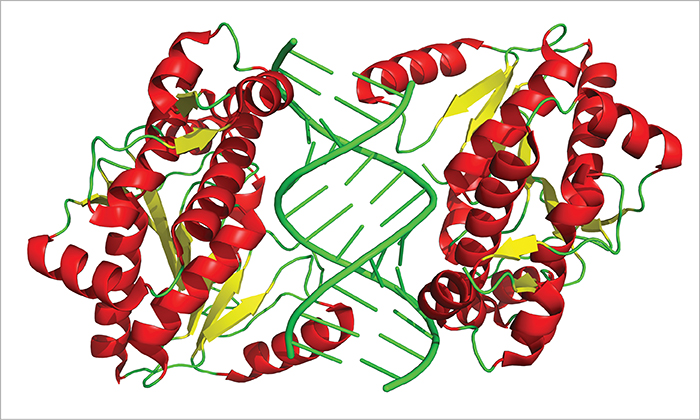
Protein Mss116p DEAD-box helicase domain 2 bound to an RNA duplex. Credit: Dr. Arthur F. Monzingo
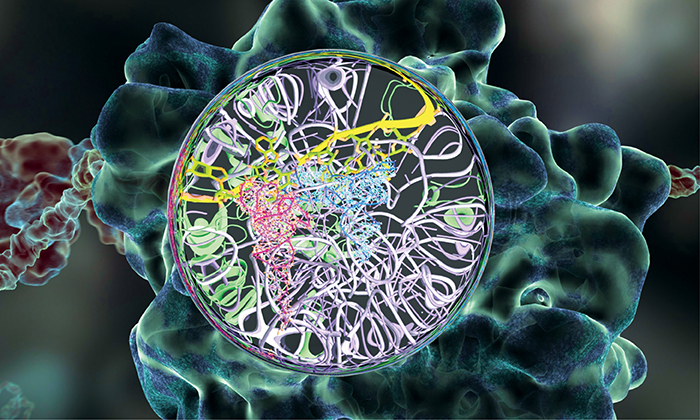
A multi-resolution zoom into the ribosome, which synthesizes proteins on demand in almost all cells. Credit: Dr. Chandra Bajaj
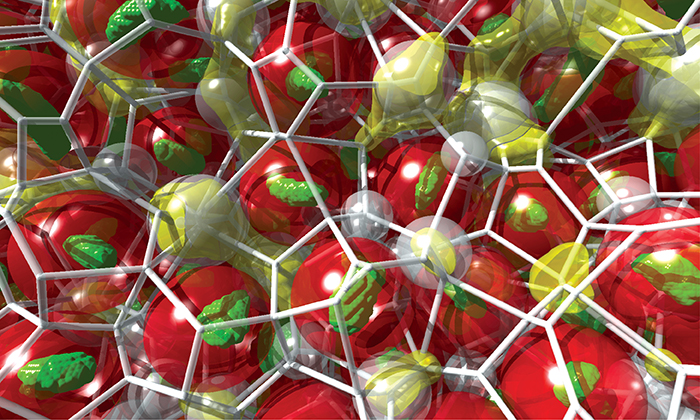
Visualization of free volume, or negative space, in a glassforming polymer. Free volume properties determine how advanced materials assemble and function. Credit: Dr. Frank Willmore
Many of these images also appear in the college's 2013 Strategic Plan, Discovery Starts Here.

















Comments 9
For the image, "Continuous wavelet transform of the heart rate of exercising subject, showing its multifractal structure", the credit should read "Dr. Kathy Davis"-apparently her correct title was left out.
So cool! I'm proud to be an alumna. Thanks for sharing.
Gorgeous and inspiring. Thank you!
The progression of science and technology since 300+years ago is nothing short of miraculous. Where does it go from today? From today into 1000 years, 10,000, 1 million years into the future.
Truly "something-more from nothing-but"! Our world/universe is awe inspiring.
Interesting pictures, but I believe only one indicates how the picture is useful. The meat of Data Visualization is the insight it delivers, not the art.
Stunning!
Thanks for sharing where art and science meet in today's world.
Fantastic! Thank you...am sharing on FB immediately!
Science and the art of photography join!